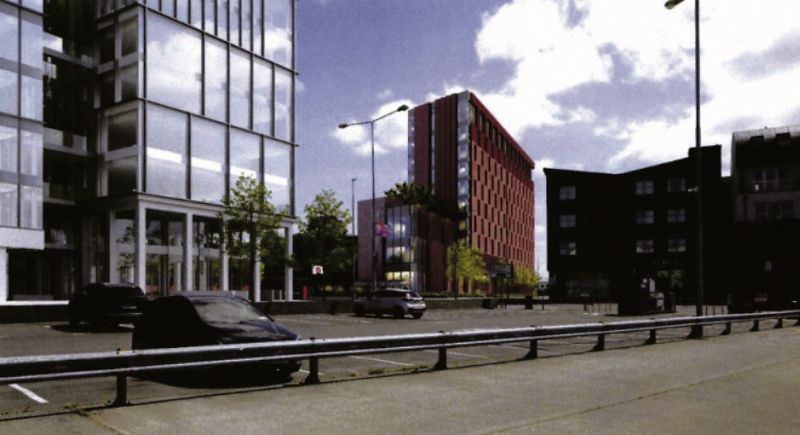Ten-storey hotel at Galway Docks turned down by Appeals Board
Published:
-

-
Author: Enda Cunningham
~ 4 minutes read
From this week's Galway City Tribune
The Planning Appeals Board has turned down plans for a 10-storey hotel at Galway Docks, ruling it would have a detrimental impact on Forthill Cemetery.
The Board dismissed the recommendation of its own Planning Inspector that the hotel be given the go ahead because the similar large developments were approved at Bonham Quay and the new Ceannt Station development, ‘Augustine Hill’.
In 2021, Summix BNM Developments Ltd, was refused permission for the development, after the City Council branded it “excessive”.
The company had initially lodged a planning application with the Council for a three-storey to eleven-storey hotel (with a rooftop bar and function area) on site of the former Bord na Mona coal yard at the Docks. The plans also included a restaurant, coffee bar and terraces.
However, the Council sent the company back to the drawing board and told it to revisit the overall scale, height, massing and intensity of the development.
The Council said that with a height of 38m and length of 70m-90m facing Bóthar na Long and Forthill Cemetery, the building was “not considered to assimilate well; lacks integration with the existing urban form; fails to achieve the visions and aspirations of the Galway City Development Plan . . . detracting from the character and setting of the area”.
The developers came back with scaled-back plans – they reduced the scheme to a maximum of 10 storeys (a height reduction of three metres) and the number of bedrooms reduced from 186 to 174 on the 0.55-acre site.
The Council said that despite the revisions to the plan, the excessive density, scale and height on a very constrained site would represent overdevelopment of the site and would have a detrimental impact on the character and setting of Forthill Cemetery.
City Council Heritage Officer, Dr Jim Higgins, said in his view the site should not be developed as the possibility of fort-related archaeology being present there is high.
He said that in the 1960s, a well was found on the CIE side of the site, close to the boundary wall. He added that many Irish graveyards were only walled in with new boundaries in the 19th Century – it was common that the full extent of burials was not enclosed.
The Council decision was subsequently appealed by the developers, who said the site was of strategic importance at a key junction and noted the National Planning Framework targets underutilised and brownfield city centre sites to “deliver compact growth most efficiently”.
An Bord Pleanála Planning Inspector Fergal Ó Bric said he did not consider the building height to be excessive, given that Bonham Quay and Augustine Hill had been approved.
Mr Ó Bric said the proposal would “assimilate satisfactorily within the newly-formed townscape of the Inner Harbour Area” and said a viewing platform area would not be an obtrusive feature on Forthill Cemetery.
“I acknowledge that the proposal will impact on the character and setting of the adjoining protected structure, Forthill Cemetery. However, on balance, I am satisfied that the impact will not be so adverse, as to warrant a refusal of planning permission,” he said, recommending that planning permission be granted.
However, the Board itself said it did not accept the Inspector’s recommendation, ruling that “by reason of its proposed height, massing, volume in conjunction with its extreme proximity to Forthill Cemeterey, [it] would have a detrimental impact upon the character and setting of this heritage asset”.
“The Board considered that, while elements of the proposal addressing Bóthar na Long were acceptable, the specific form of the development in respect of its massing, scale, volume and height as it addresses Forthill Cemetery, coupled with the extreme proximity to same, would be overbearing when viewed from this culturally important site,” the ruling reads, adding that Bonham Quay and the Ceannt Station regeneration schemes are at a greater distance from the cemetery.
Summix – which is headed by British technology entrepreneurs Shukri Shammas and Tareq Naqib and includes Galway developer Gerry Barrett as a director – is already behind approved plans for 360 student bed spaces on a site at Queen Street, behind Bonham Quay.
They have also partnered on the €320m ‘Augustine Hill’ regeneration plan, which includes homes, a new shopping precinct with four public squares, a multiplex cinema and eleven streets linking the city centre with the Docks and Lough Atalia. That plan was approved by An Bord Pleanála a fortnight ago.
More like this:

New-look Land Cruiser now available for Irish motorists to reserve for 2025
Toyota Ireland has announced that the new version of the Land Cruiser is now available for Irish ...
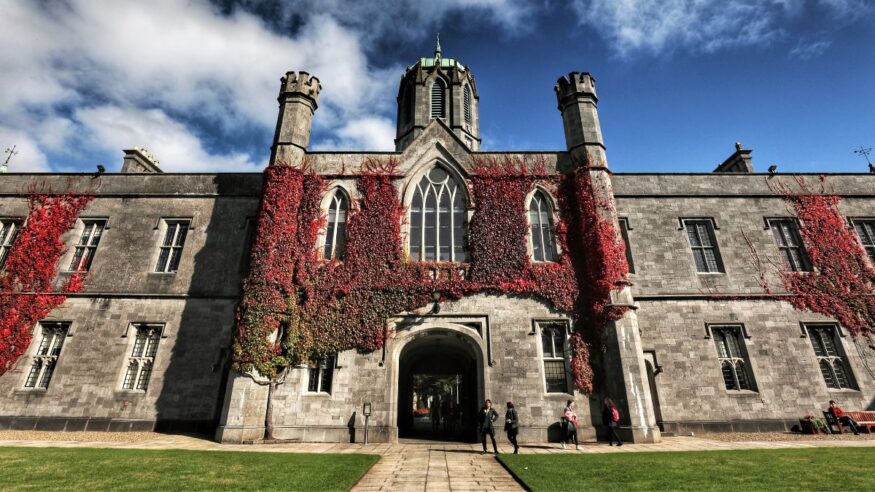
University’s toxic work environment revealed
A report into culture at the University of Galway has revealed a toxic workplace environment of b...
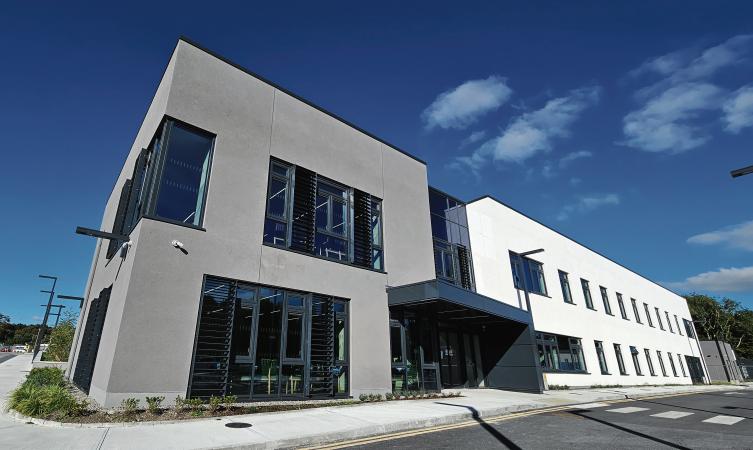
New outpatients unit at Merlin Park first step in moving appointments away from UHG
A new outpatients’ building at Merlin Park University Hospital — built at a cost of €15.33 millio...

Dillon delivers for Ballinasloe to force draw in the last play
An Spidéal 0-19 Ballinasloe 2-13 By DARREN KELLY IN GORT ON a day of draws in Galway GAA...

DDP and lessons in life learned from a true pro
A Different View with Dave O’Connell The best education isn’t always consumed in the classroom...
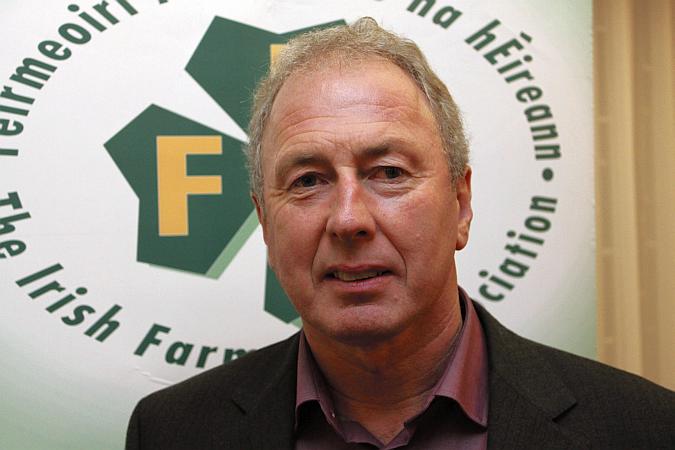
More info needed on urea roadmap
THE Dept. of Agriculture and Teagasc need to make ‘a bigger and better effort’ to communicate wit...

Staying loyal to the tea camp as coffee culture takes over
Country Living with Francis Farragher It’s more of a curious conundrum than anything else for ...

Answering Connacht’s call in hour of darkness
In his new book, John Scally traces the province’s journey from the brink of extinction in 2003 t...
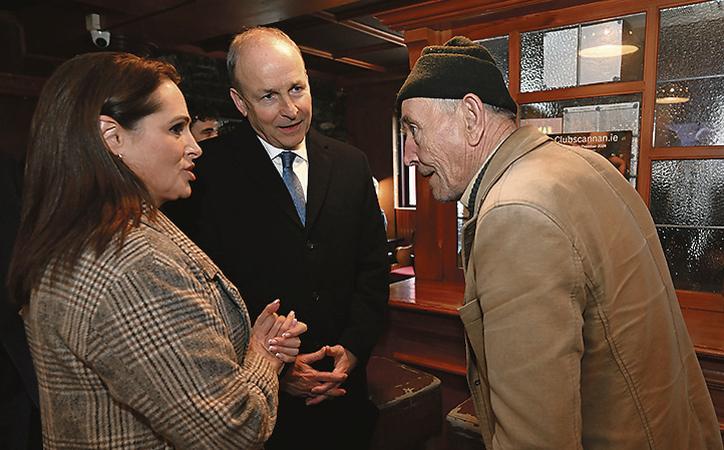
Transfers will again be the key factor in Galway West
World of Politics with Harry McGee Back in 2002, the Progressive Democrats came up with a stra...
Sign Up To get Weekly Sports UPDATES




